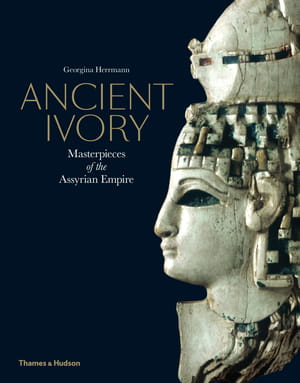
Ancient Ivory: Masterpieces of the Assyrian Empire
Graham Chandler
Georgina Herrmann
2017, Thames & Hudson, 978-0-50005-191-7, $60 hb.
British archeologist Austen Henry Layard discovered the first pieces of carved ivory at Nimrud in 1845, but it wasn’t until a century later that his countryman Max Mallowan revealed the astonishing number of ivory masterpieces at the first-millennium-BCE Assyrian capital in northern Iraq. Mallowan’s team unearthed thousands of ivories, probably made from the horn of the African elephant, in the most unlikely places: well bottoms, palace storerooms or just strewn about. This may attest to the low value the Assyrians placed on the artworks, writes Herrmann, a specialist in Nimrud ivories at University College London, who says the majority were not made at Nimrud but acquired as gifts or tribute, or booty from enemy states. Hundreds of the finds, which illuminate Middle Eastern art and culture more than 2,500 years ago, are superbly photographed and meticulously described, including their provenance at Nimrud and last-known location. The value of this volume to academics and interested amateurs is immense, as many of the pieces shown no longer exist or have been lost to looters during recent conflicts.
You may also be interested in...

Old Documents Shed New Light on History in Book Connected to Ancient Islamic World
The painstaking work to recover history—one page at a time—is on brilliant display in this collection of essays focusing on early Arabic, Coptic, Greek, Hebrew, Latin and Sogdian manuscripts.
Archaeology and Geology of Ancient Egyptian Stones
Spanning three decades of fieldwork, Archaeology and Geology of Ancient Egyptian Stones is as vast as its subject: the stones ancient Egyptians used to shape their civilization.